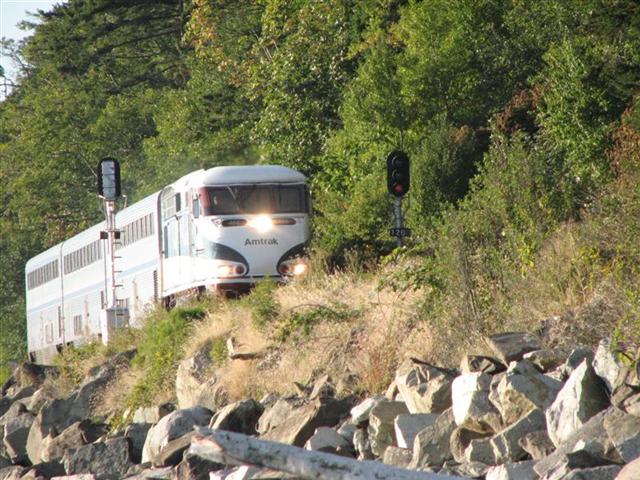|
|
Amtrak Cascades Crescent Beach
|
Government regulation and labor issues
The first interruption in passenger rail's vibrancy coincided with government intervention. From approximately 1910 to 1921, the federal government introduced a populist rate-setting scheme, followed by nationalization of the rail industry for World War I. Ample railroad profits were erased, growth of the rail system was reversed, and railroads massively underinvested in passenger rail facilities during this time. Meanwhile, labor costs advanced, and with them passenger fares, which discouraged passenger traffic just as automobiles gained a foothold.
The primary regulatory authority affecting rail interest from early 20th century was the Interstate Commerce Commission (ICC). The ICC played a leading role in rate-setting and intervened in other ways detrimental to passenger rail. Increases in train speeds which had been occurring since the 1930s were hampered after the Naperville train disaster of 1946 and other crashes in New York in 1950. In 1947 the ICC issued an order requiring US railroads, by the end of 1951, to install automatic train-stop or train-control or cab-signalling wherever any trains would travel at 80 mph (130 km/h) or faster. Such technology was not widely implemented outside the Northeast., effectively placing a speed limit in other areas. In 1958, the ICC was granted authority to allow or reject modifications and eliminations of passenger routes (train-offs). Many routes required beneficial pruning, but the ICC delayed action by an average of eight months and when it did authorize modifications, the ICC insisted that unsuccessful routes be merged with profitable ones. Thus, fast, popular rail service was transformed into slow, unpopular service. The ICC was even more critical of corporate mergers. Many combinations, which railroads sought to complete, were delayed for years and even decades, such as the merger of the New York Central Railroad and Pennsylvania Railroad, into what eventually became Penn Central, and the Delaware, Lackawanna and Western Railroad and Erie Railroad into the Erie Lackawanna Railway. By the time the ICC approved the mergers in the 1960s, disinvestments by the federal government, years of deteriorating equipment and station facilities and the flight of passengers to the air and car had taken their toll and the mergers were unsuccessful.
|
|









